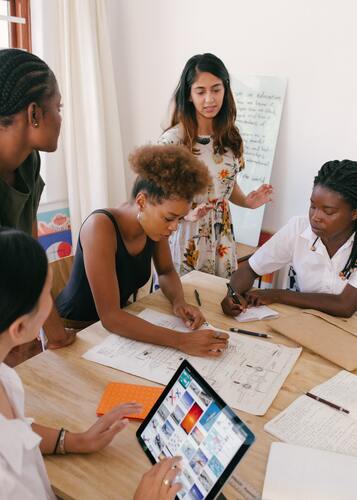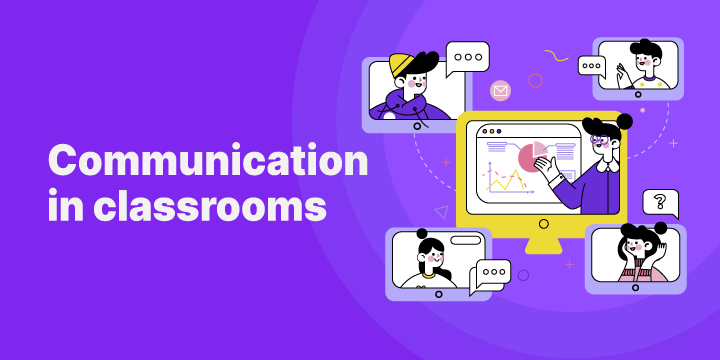Effective communication in classrooms is essential to keep it well-run. This sounds simple and precise, but it requires much more than a teacher saying something out loud to a student.
Communication is key in any classroom:
Successful teaching is generally considered to require only 50% knowledge to 50% communication skills.

As a result, a teacher should be skilled in all four modes of communication, i.e. listening, speaking, reading, and writing – and should know how to use these skills effectively in a teaching and tutoring environment.
As a teacher, good communication skills are one of the most important aspects of your job. In your role, you are responsible for comprehending and breaking down complex information, conveying the given information clearly to your students (both verbally and in written resources), presenting it in a manner that sustains their attention, and listening to and resolving their questions or problems.
In this blog, we will be recommending you some of the key tactics that you can adapt to make your classroom more communicative and efficient;
Create a safe and supportive learning environment

A supporting and respectful relationship between a student and a teacher results in a positive classroom environment and helps in the better performance of the students.
You can create a safe environment for your students through communication.
Know your students, try to learn their names in the early years. Create an environment where they are aware that they are safe from judgment or humiliation in your classroom. Have an open-door policy for your students so that they can come easily to you with their questions. Be empathetic and try to understand them rather than neglecting their thoughts and ideas. Identify the students who are shy or are scared of public attention. Don’t indulge in forcing them to participate in any discussion or debates. It could be suffocating for them rather than motivating them, talking to them in person and helping them in gaining confidence.
Body language

Communication is not only verbal, but also non-verbal: you should ensure that the signals you are giving out through your body language are positive, confident, and engaging. Maintaining eye contact with students when you are talking to them shows that you are supportive and attentive. Eye contact is also important when you are presenting to the whole class – it motivates everyone to pay attention, which helps them to learn, as well as makes them feel involved.
To make more eye contact, you may have to learn your lesson content more thoroughly in advance, so that you don’t have to look away to read your notes. As you teach, you should use gestures frequently to emphasize your words. Keep your arms open – do not fold them – and use smiles, nods, and thumbs up to encourage students when they participate. Moving around the classroom while you teach can also help to remove the barrier between you and your students, and gives them less opportunity to zone out or get distracted.
Check for Understanding

A teacher should always check for understanding. The simple question, “Do you understand?” will not result in much information, as most students will either nod or sit passively. Students can write down one sentence that summarizes what they think the lesson or lecture was about, or they can write a question they have about the lesson. In a one-on-one conversation, a teacher should ask the student to repeat the main point or outcome of the conversation.
Technical skills

Using up-to-date teaching tools and aids such as computers, videos, and online resources is another way to keep students engaged and reinforce their understanding. It can also increase the effectiveness of your communication with students with different learning styles, who may benefit more from online resources than more old-fashioned ones. Try to work some of these aids into your lessons regularly.




